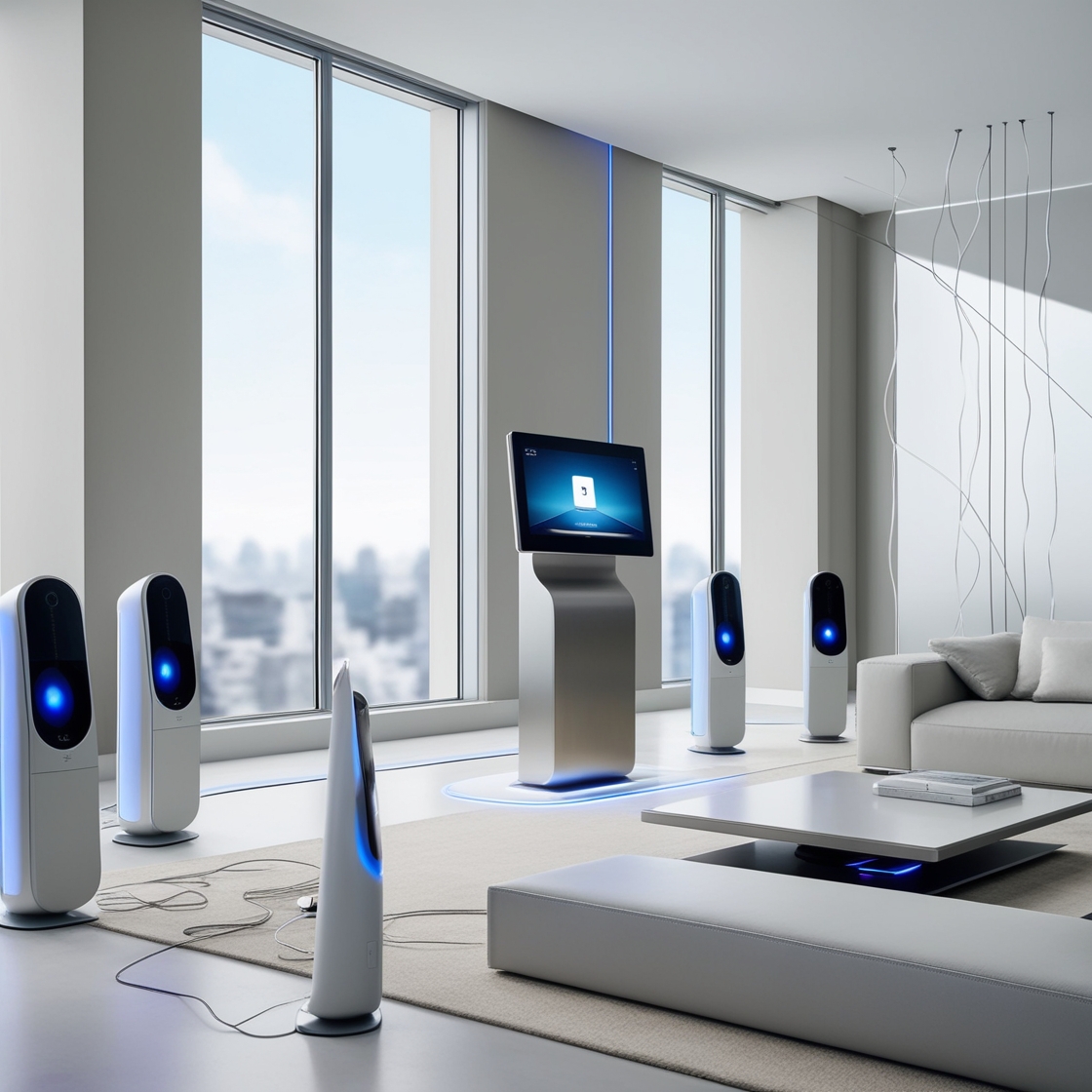Introduction
Imagine a world where your home anticipates your needs, adjusting the temperature just before you arrive and locking the doors automatically when you leave. That’s the magic of smart home technology! This technology has revolutionized our living spaces, making them more convenient, secure, and energy-efficient. In this article, we’ll explore what smart home technology is, how it has evolved, its key components, benefits, challenges, and future trends. So, let’s dive in!
The Evolution of Smart Home Technology
Early Innovations
Smart home technology isn’t a new concept. Its roots can be traced back to the 1960s when basic automation systems began to emerge. Initially, these systems were limited to controlling lights and thermostats through timers and remote controls.
Recent Developments
Fast forward to today, and we’re living in a time when sophisticated smart home devices are as common as coffee makers. Innovations in IoT (Internet of Things), AI, and connectivity have made it possible for us to control our homes from anywhere in the world using just our smartphones.
Key Components of Smart Home Technology
Smart Appliances
Smart Refrigerators
Ever forgotten what’s in your fridge? Smart refrigerators can tell you what items you have, suggest recipes, and even order groceries when you’re running low!
Smart Ovens
With smart ovens, you can preheat your oven from your phone or receive notifications when your dinner is ready. Talk about convenience!
Smart Security Systems
Smart Cameras
Keep an eye on your home from anywhere with smart cameras that provide real-time footage and alerts on your phone.
Smart Locks
Say goodbye to traditional keys! Smart locks allow you to unlock your door with your phone, providing a keyless entry that’s both convenient and secure.
Home Automation Systems
Hub-Based Systems
These systems act as the brain of your smart home, connecting various devices and allowing them to communicate with each other seamlessly.
Voice-Controlled Systems
Imagine controlling your lights or thermostat just by speaking! With devices like Amazon Echo and Google Home, voice commands have become a popular way to manage smart homes.
Benefits of Smart Home Technology
Convenience
Smart home technology brings unparalleled convenience to your life. With just a few taps on your smartphone or a simple voice command, you can control everything from lighting to security.
Energy Efficiency
Many smart devices are designed to optimize energy use. Smart thermostats, for example, can learn your schedule and adjust the temperature accordingly, helping you save on energy bills.
Enhanced Security
The integration of smart security systems provides peace of mind. From real-time alerts to remote monitoring, you can keep an eye on your home at all times.
Cost Savings
While the initial investment may seem high, smart home technology often leads to long-term savings through reduced energy consumption and improved security, ultimately offsetting costs.
Challenges and Concerns
Privacy Issues
As much as we love convenience, smart home technology raises concerns about privacy. With devices constantly collecting data, it’s essential to understand how your information is used and protected.
Compatibility and Integration
Not all smart devices work seamlessly together. Ensuring compatibility between various systems can be a challenge for homeowners looking to create an integrated smart home environment.
Dependence on Technology
As our homes become smarter, there’s a risk of becoming overly dependent on technology. It’s crucial to maintain a balance and be prepared for potential technical failures.
How to Get Started with Smart Home Technology
Assessing Your Needs
Before diving in, consider what you want from your smart home. Are you looking for increased security, convenience, or energy efficiency? Identifying your priorities will help guide your choices.
Choosing the Right Devices
With so many options available, it’s important to research and choose devices that meet your needs and budget. Read reviews, compare features, and don’t hesitate to ask for recommendations.
DIY vs. Professional Installation
While some smart devices are easy to install, others may require professional help. Determine your comfort level with technology and decide whether you’ll tackle installation yourself or hire a pro.
Future Trends in Smart Home Technology
AI and Machine Learning Integration
As AI technology advances, we can expect our smart homes to become even more intuitive. Imagine a home that learns your habits and preferences, making adjustments automatically to enhance your living experience.
Sustainable Smart Homes
Sustainability is becoming a priority for many homeowners. Smart technology can help optimize energy use and reduce waste, making homes not only smarter but also more environmentally friendly.
Increased Interconnectivity
As smart devices continue to proliferate, we’ll see increased interconnectivity between them. This will lead to more seamless control and communication, creating a truly integrated smart home ecosystem.
Conclusion
Smart home technology is transforming the way we live, offering unprecedented convenience, security, and efficiency. As technology continues to evolve, it’s exciting to think about how our living spaces will adapt to our needs. Whether you’re just starting your smart home journey or looking to enhance your existing setup, the possibilities are endless!
FAQs
What is the most essential smart home device?
While it varies from person to person, smart thermostats are often considered essential for their ability to save energy and enhance comfort.
Are smart homes safe from hackers?
No system is completely immune, but implementing strong security measures—like two-factor authentication and regular software updates—can significantly reduce risks.
Can I install smart devices myself?
Many smart devices are designed for easy DIY installation. However, complex systems may benefit from professional installation for optimal performance.
How do smart home devices save energy?
Smart devices, like thermostats and lights, can optimize energy usage by adjusting settings based on your habits and preferences, reducing overall consumption.
What is the future of smart home technology?
Expect more AI integration, sustainable solutions, and increased interconnectivity between devices, making homes even smarter and more efficient.
